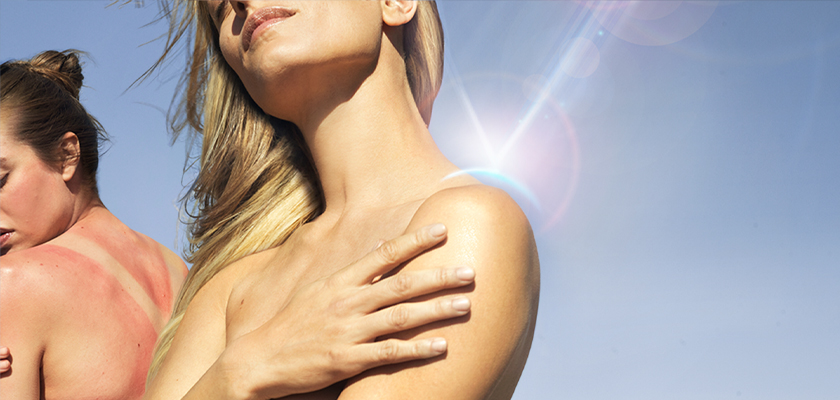UVA vs UVB
To understand UV protection, first it’s necessary to know the difference between UVA and UVB rays2, which are just part of the spectrum of light emitted by the sun—and there’s an easy way to remember how each of them affect the skin. UVA rays are considered “aging” rays because they can prematurely age the skin by causing wrinkles and discoloration, and these rays can penetrate glass. UVB rays are the “burning” rays, and these rays do not /significantly penetrate glass. However, one thing that UVA and UVB rays have in common is that overexposure to either can lead to skin cancer in all skin types and ethnicities3. This is why it’s essential to use a broad spectrum sun protection product4, which means it helps protect against both UVA and UVB rays.5
What does SPF Mean?
SPF stands for “sun protection factor,” but SPF only indicates protection against UVB, or “burning” rays. It may seem like an SPF of 50 provides almost double the protection as SPF 30, but that’s not the case. SPF 30 blocks 97% of UVB rays 6 and SPF 50 blocks 98% of UVB rays.6
Since SPF only applies to UVB rays, it’s imperative to choose a sunscreen that says “broad spectrum” on the label, as this indicates the product helps protect the skin from UVA rays as well.5 Remember, a higher SPF does not mean you can spend more time outside without reapplying.
What SPF to use?
The best sunscreen4 is a broad spectrum formula that helps protect against UVA and UVB rays that you will use every day. Some sunscreen products can be specially-formulated to provide other benefits to the skin, such as extra moisture, and may contain beneficial ingredients such as soothing niacinamide and ceramides to help restore the skin’s natural protective barrier.
How Does SPF Work?
Sunscreens with chemical-based ingredients such as homosalate, work by absorbing UV rays before they can damage the skin. Physical or mineral-based UV ingredients like zinc oxide and titanium dioxide create a barrier on the skin’s surface that reflects UV rays. Some sun protection products include a mix of both chemical and mineral sun filters7—and you can learn more about these ingredients here. The key for optimal sun protection is proper application8, and it’s essential to apply an adequate amount of sunscreen to cover exposed skin and reapply as directed. 5

How to use Sunscreen
It’s important to keep a few additional application tips8 in mind to maximize the UV protection sunscreen can provide. Most adults need about one ounce, or enough to fill a shot glass, for the entire body—and don’t forget often-missed spots like the ears, tops of the feet and the back of the neck. Stick-based UV protection is helpful for smaller areas such as around the eyes and the lips. When using sunscreen, it’s important to apply 15 minutes before you will be exposed to the sun. And, again, remember to reapply at least every two hours, or after swimming, sweating or towel-drying8. (When in doubt, read the instructions on the bottle or tube.)
- https://www.aad.org/public/spot-skin-cancer/learn-about-skin-cancer/prevent/sunscreen-labels/how-to-decode-sunscreen-lingo
- https://www.skincancer.org/prevention/uva-and-uvb
- https://www.aad.org/media/stats/prevention-and-care/sunscreen-faqs
- https://www.aad.org/public/skin-hair-nails/skin-care/sunscreen
- Baumann, L. (2009) Cosmetic Dermatology: Principles and Practice (pp.245-254). New York: McGraw-Hill Medical
- https://www.skincancer.org/
- https://www.aad.org/public/spot-skin-cancer/learn-about-skin-cancer/prevent/say-yes-to-sun-protection
- https://www.aad.org/public/spot-skin-cancer/learn-about-skin-cancer/prevent/how-to-apply-sunscreen
